We’re always excited when Nikki Grimes shares one of her new books with us. This one is especially lovely, A Cup of Quiet, which celebrates the grandparent and grandchild relationship as well as all the sounds we hear when we’re quiet and we pay attention.
Do you have daily work hours … or do you write when the mood strikes you?
Nikki: I don’t have set hours, but, when I’m not on the road for speaking engagements, I work every day.
What does your work space look like?
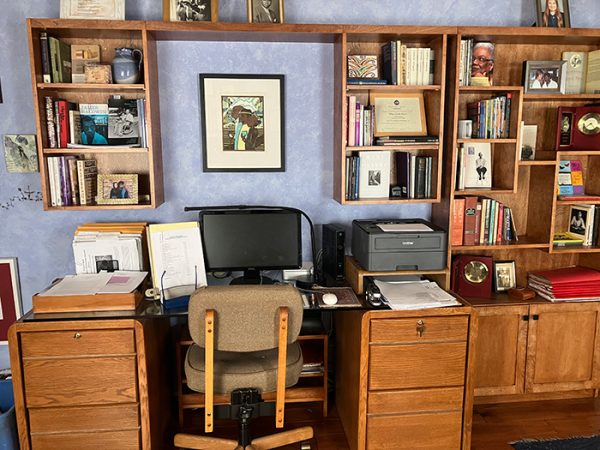
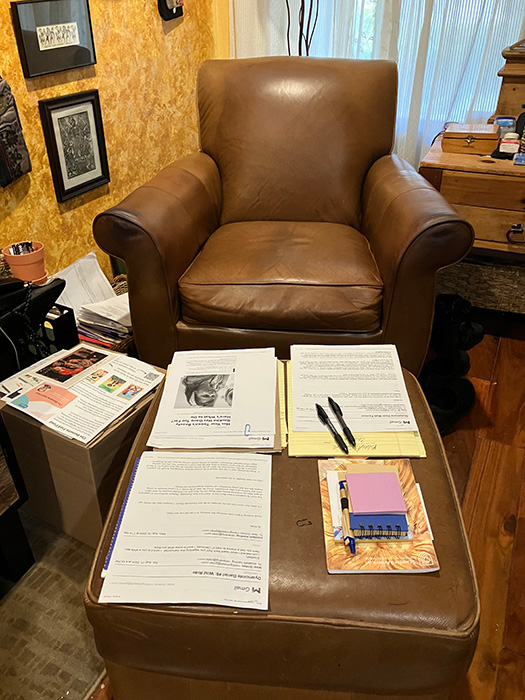
When you sit down to focus on a picture book, do you already have the concept firmly in mind?
Nikki: Yes. I don’t start writing until I have the concept in mind. Otherwise, I’d end up writing in circles, and I don’t have that kind of time!
Do you say something like “I haven’t written this type of book before … or this type of book seems to be selling well, I’ll concentrate on that.”
Nikki: I’m not looking at the market, or at trends. My focus is on what’s needed, what’s missing, what important topic hasn’t been addressed. That’s what moves me to pick up the pen. I do like to stretch myself, though, and if I’m intrigued by a particular genre I haven’t tried before, I will gravitate towards it to give it a try, once I have the right story for that form.
Are you looking at poems you’ve written already to see if something seems like it would work for a picture book?
Nikki: I’m rarely looking at individual poems, but I do, occasionally, pull out old manuscripts to reread them for relevance, or inspiration.
When you move forward on a project, do you feel a connection to the work that assures you this will be worth spending your time?
Nikki: I have to be passionate about a project, or there’s no point in even starting. A book takes a long time to write, and what gets me through all the ups and downs, the multiple edits, the rewrites, and rewrites, and more rewrites is that passion. As any author will tell you, writing is mostly re-writing!
For A Cup of Quiet in particular, could you share your process for developing this book into a manuscript?
Nikki: As always, I sketched out the idea in plain prose, and did character sketches for the main characters. I figured out where the story would take place, because I needed to have a picture of it in my mind in order to describe it to the reader. Finally, I made a list of all the sounds the character would hear — in the house, from the front porch, and in the garden. Once I had all those pieces, I could begin to write.
Once you feel you have something that will work, do you show it to any first readers?
Nikki: Yes. I have a few readers I trust to give me honest, constructive feedback on my work. Sometimes, it’s just a matter of them asking me questions that should’ve been answered in the manuscript, and so I know I have to go back and do a little more work. This feedback is very helpful.
Do you suggest publishing houses to your agent?
Nikki: My agent and I are always in dialogue. Sometimes I suggest a publisher I have in mind for that particular manuscript, sometimes she does. In either case, we discuss our ideas and settle on a plan for next steps. Often we have a few publishers in mind, so we discuss the order in which to make submissions.
Once A Cup of Quiet was accepted by Bloomsbury Children’s Books, did you have input on the illustrator for the book?
Nikki: In this case, I had a very specific illustrator in mind, one I’d used for a few past projects I’d done with Bloomsbury, so they were very familiar with her work.
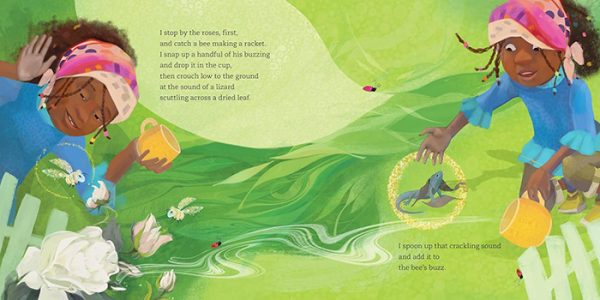
written by Nikki Grimes, published by Bloomsbury Children’s Books
What kind of feedback did your editor give you for the manuscript?
Nikki: To be honest, I don’t remember! The editorial process on A Cup of Quiet took place several books ago! Since the manuscript was complete nearly two years before the art was, we’re talking about maybe three years ago, now! But I can tell you this much: Edits usually have to do with the length of the poems. Occasionally, I’ll use language that is a little too sophisticated for the audience, and so I’ll have to go back and rewrite it to make it more kid-friendly. There are always tweaks to be made, especially in a picture book where every single word counts.
At what point do you see the assembled parts of the book? Do you have the ability to comment at that point?
Nikki: I see it at several stages. I see sketches, sometimes I see a complete book dummy, later I see more polished pages. Eventually, I see proofs of the entire book. I’m invited to ask questions and give comments all along the way.
How long was it from the point you began working on A Cup of Quiet until you held the finished book in your hands?
Nikki: This one took about four years. It’s hard to wait so long for a book, once I’ve done my part, but the author doesn’t control that. First, I had to wait for the artist to complete the books she was already working on. Then, there were starts and stops in the illustration process, due to illness. Life happens, and you have to be patient with the process. The important thing was that I believed in this artist. I knew she was the right illustrator for this book, and I knew the wait would be worth it — and it was! The illustrations are glorious.
Thanks for letting us look behind the story of this book, Nikki. As I was reading, I pictured the adults and children who will share A Cup of Quiet, and re-read it often, smiling all the while. I know our readers are grateful to hear about how you write, particularly this charming book.

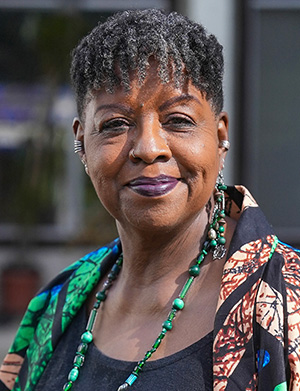
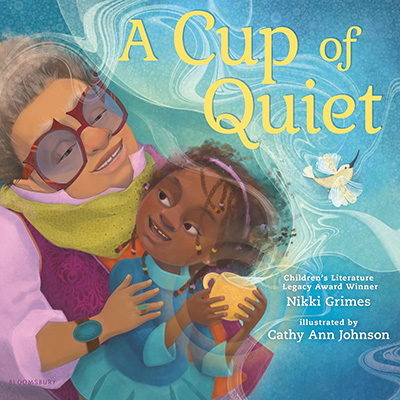
Nikki said you are doing a book give away. I don’t see any mention of it.
Sue, the book giveaway will be in our newsletter on April 18th. Our newsletter is a free subscription. You can sign up for it on our home page, upper right corner.